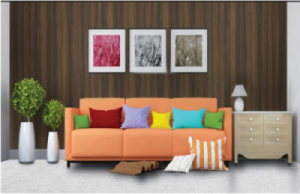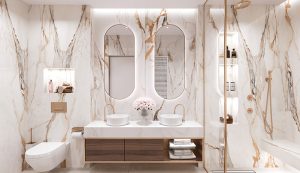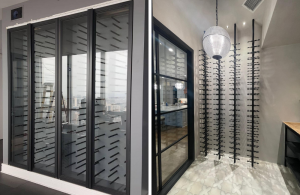Designing for Small Spaces? Laminates Can Make Your Room Look Bigger

Small spaces need big thinking. Every inch counts. Every surface matters. In tight rooms, walls, furniture, and flooring must do more than look good – they must create the illusion of space. That’s where laminates come in. Designers often rely on them not just for style but for function. When used smartly, decorative laminates and laminate sheets can make rooms feel open, airy, and far more spacious than they actually are.
It’s not about knocking down walls. It’s about using materials that reflect light, guide the eye, and reduce visual clutter.
Why visual space matters
Small rooms feel smaller when colours are dark, textures are heavy, or furniture stands out too much. Surfaces that absorb light or interrupt the visual flow make the area feel tight. But when finishes reflect light or carry clean lines, the space opens up.
Decorative laminates help create this visual expansion. They come in high-gloss, matte, textured, and solid finishes. Each one plays a role in shifting how the eye sees the room. Laminate sheets are used on walls, wardrobes, cabinets, and doors – the most visible parts of a home. So when you pick the right ones, the entire room transforms.
How laminates reshape a room
Laminates are more than surface covers. They change how light moves across the room. Glossy laminates bounce light around. Light-coloured laminate sheets fade into the background. Woodgrains and vertical textures draw the eye upward. Clean, uniform finishes reduce noise in the layout. The result? A space that feels bigger than it is.
Strategic laminate choices designers use
- High-gloss decorative laminates on wardrobes to reflect light and mirror the space
- Vertical grain laminate sheets on panels to draw the eye upwards and increase perceived height
- Soft beige or pastel laminates to reduce harsh contrasts and maintain a seamless look
- Matching laminates on furniture and walls to blur boundaries and avoid break points
- Textured laminates on a single surface to add depth without adding clutter
Each of these techniques has one purpose – to make a small room feel larger, brighter, and more put-together.
Laminates work for all parts of the home
In a compact living room, laminate sheets can be used on panelled walls to create a uniform tone. No sharp colour breaks. No bulky finishes. In a kitchen, decorative laminates can reflect under-cabinet lighting and make counters look bigger. In a bedroom, using the same laminate on the headboard and side tables creates continuity.
Even ceilings can benefit. A subtle matte laminate in a warm neutral can add dimension without bringing the ceiling down visually.
Furniture plays a big role, too.
In small homes, furniture often has to double up on function. But it also needs to look light. Bulky finishes can make it appear heavier than it is. Using decorative laminates gives furniture a clean, refined surface. Whether it’s a foldable table, a wall-mounted desk, or compact storage units, the right laminate sheets help them disappear into the room when not in use.
When everything blends in – colours, surfaces, lines – the space feels bigger. And that’s the design trick professionals count on.
Durability meets style
Small spaces are often high-use areas. Laminates are durable. They resist scratches, stains, and moisture. This makes them ideal for multi-purpose spaces like studio apartments, shared family rooms, or compact kitchens. Even with daily use, decorative laminates retain their finish and colour.
This matters when every corner of the room serves a purpose. You need a surface that performs well and looks consistent for years.
Projects that show how laminates work
In a 1BHK city apartment, a designer used high-gloss white laminate sheets across all cabinet doors. It reflected both natural and artificial light. The kitchen and living space looked brighter and more connected. In a tiny guest bedroom, decorative laminates in ash wood tone were used on the wardrobe, door, and wall panelling. It created a wraparound effect, giving the room a warm, continuous feel.
In a home office nook carved from a corner, vertical laminate panels in a light oak finish lifted the ceiling line. The desk used the same laminate, tying the area together without breaking the space. Every design choice here made the room feel more open and organised.
Laminates offer endless flexibility
From subtle neutrals to bold patterns, decorative laminates come in countless options. You can pick a tone that suits your aesthetic and still apply the same principles – light reflection, visual continuity, and minimal contrast. Laminate sheets work well with edge bands, concealed hardware, and push-to-open fittings, all of which support minimal and clean design.
Whether it’s a studio flat, a small bedroom, or a tight kitchen, the right laminates can completely shift how the space feels.
Conclusion
Designing small spaces isn’t about cutting back. It’s about choosing smarter materials. Decorative laminates and laminate sheets offer style and structure that work together to open up a room. With the right finish, tone, and layout, they help turn even the tightest spaces into comfortable, elegant interiors. CenturyPly offers a range of laminate options that bring this vision to life – practical, stylish, and made for modern living.



